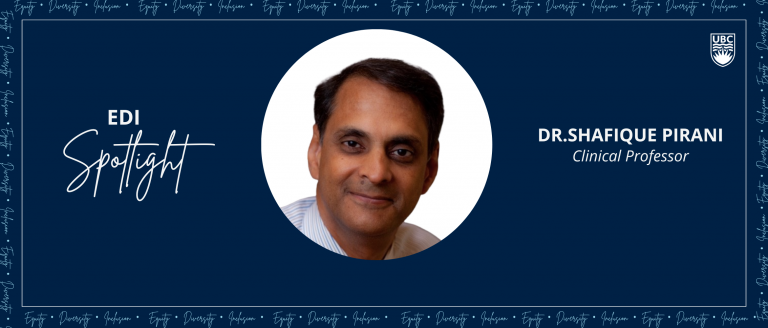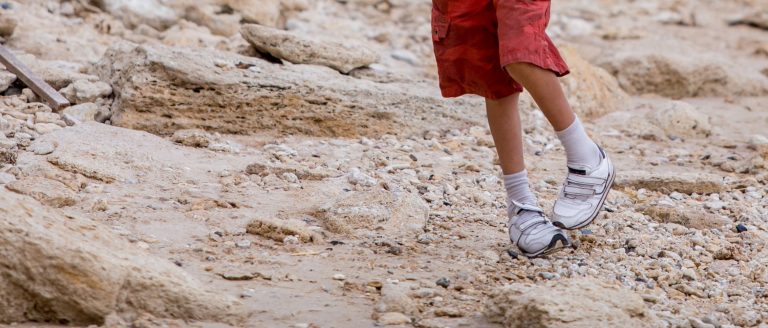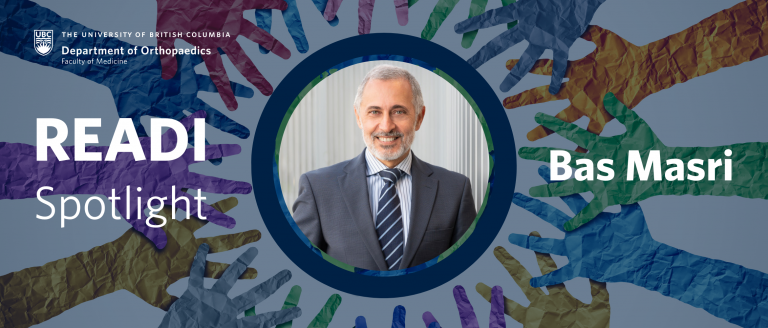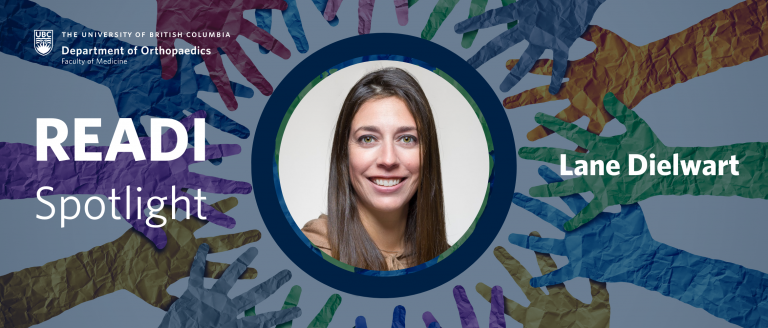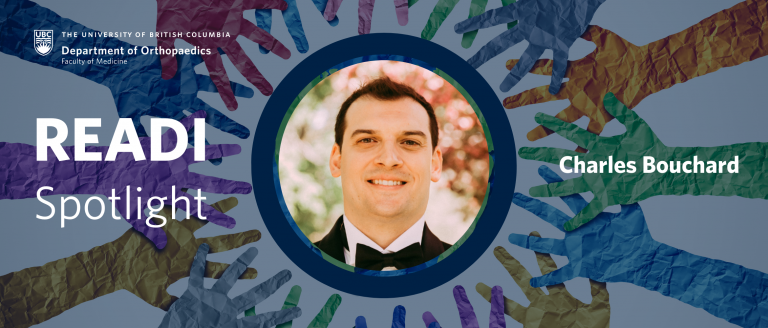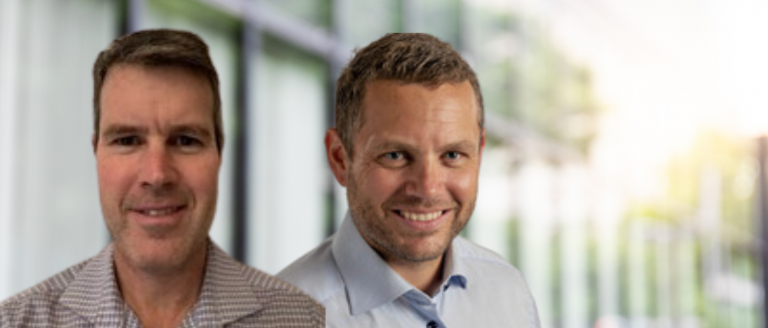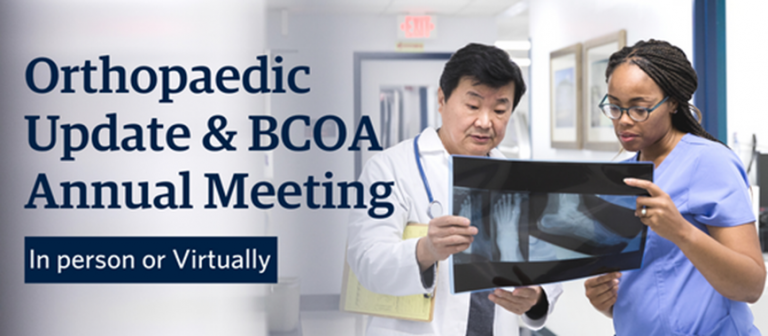By Olatioluwase (Ola) Olatona
For the month of July, each Monday we are featuring an interview with a UBC Department of Orthopaedics member about how equity, diversity, and inclusion (EDI) appears in their life.
In our forth spotlight of our four-part introductory EDI Spotlight Series, we speak with Clinical Professor Shafique Pirani.
Read the interviews with Professor Emeritus Dr. Stephen Tredwell, Clinical Fellow Judith Nassaazi, and third-year Resident Taylor Crown.
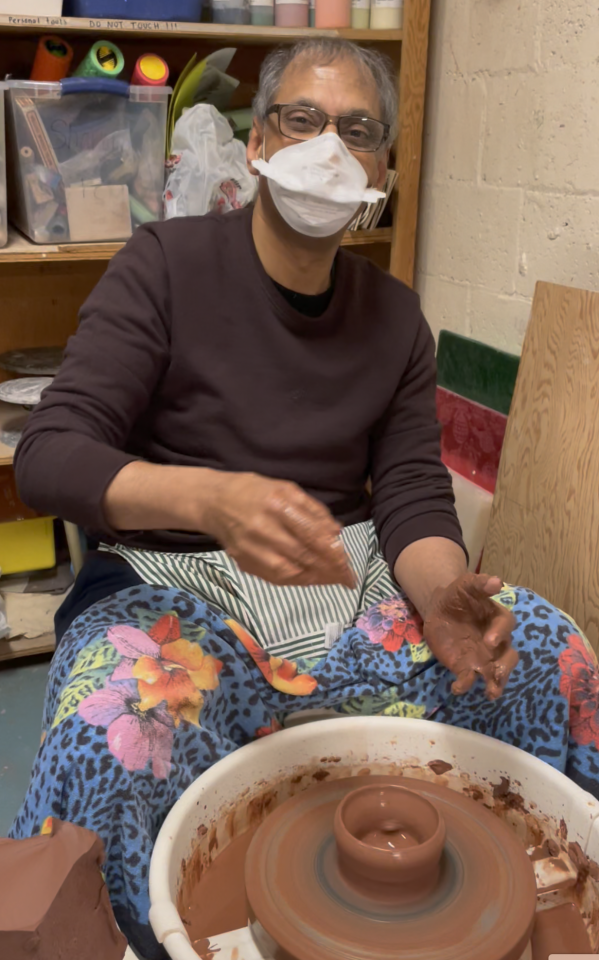
SHAFIQUE PIRANI
CLINICAL PROFESSOR
Division:
Pediatrics
Site:
Fraser – Royal Columbian Hospital
What does EDI mean to you?
EDI definitions abound. To me, it means I ask myself “what can I do to level the playing field” for the person in front of me? I was a beneficiary of this thinking at four years of age, and children with clubfeet in low- and middle-income countries are beneficiaries of this thinking now. Read below….
What is your background and what led you to your interest in ortho?
I grew up in Uganda. I contracted polio at four years and my parents took me to England to get the best care. At the orthopedic surgeon’s office, my mom enquired “what will be my son’s future?” The smart orthopaedic surgeon, understanding mother’s worry and how emphasizing abilities rather than disabilities can change perception, immediately replied “your son will be a fine orthopedic surgeon.” Encouraged daily by my strong mother, I knew I wanted to be an orthopedic surgeon before I knew I wanted to be a doctor! I was a beneficiary of EDI thinking even before the term came into existence.
After high school, I obtained medical training in London, England at the Charing Cross Hospital Medical School (now part of London’s Imperial College)—one of only seven people of colour in my year out of a class of 120.
My family was one of 7,000 Uganda Asians accepted by Canada when thrown out of Uganda by dictator Idi Amin. Knowing I wanted a future in orthopaedic surgery in Canada, I did my residency in our UBC Orthopaedic program.
During residency, I naturally developed interest and desire in the orthopedic problems of children, and gained a fellowship in pediatric orthopedics at the Hospital for Sick Children in Toronto. There I developed a fascination for the clubfoot deformity and its surgery. I returned to BC to a pediatric orthopaedic position awaiting me at the Royal Columbian Hospital (RCH) in 1991. I started a clubfoot clinic in 1993 and am still there after 30 years.
Though surgical correction was the standard of care, I became interested in and confirmed with MRI studies that Dr Ignacio Ponseti’s non-surgical treatment, published in 1963, did indeed correct the deformity and surgery was not only unnecessary but harmful as it caused post-surgical scar that compromised long-term outcomes. RCH, in 1995, became the first clinic to offer the Ponseti method of clubfoot treatment in Canada. This was of course important, not only because it reduced costs and improved outcomes here, but also because it made treatment economically and socially acceptable in low- and middle-income countries with constrained surgical resources.
Indeed, I was able to see this happen. In 1998, I returned to Uganda after 26 years away to see the old house and school. More importantly, I saw many children walking in the street with untreated clubfeet, simply because surgery was unavailable. Immediately the potential of the Ponseti method in Uganda became apparent. Potential turned into promise through the work of many local and international partners with the Uganda Sustainable Clubfoot Care Project. This was an initiative at the intersection between orthopaedics and public health funded by CIDA that built Ponseti treatment and teaching capacities throughout Uganda’s public health institutions and schools of healthcare, a model that has been widely emulated in other countries.
Another clubfoot initiative that I have very much enjoyed is the development of the Pirani Score for clubfoot deformity assessment, now used worldwide and is discussed in the following papers.
- The Uganda Project: Towards Effective Ponseti Clubfoot Care: The Uganda Sustainable Clubfoot Care Project.
What excites you most about your future?
My curiosity excites me. Who knows what new thinking will occur or what doors will open. Of course, I remain very interested in the burden of clubfoot around the world, and I am investigating mobile app tools with AI that have potential to reduce error and improve clubfoot outcomes in developing countries.
Outside of ortho where can we find you?
I enjoy sailing and pottery—the discussion, the coffee and everything involved. And I especially love pottery classes on Wednesday with my wife.
Publications
- Pirani S, Naddumba E, Mathias R, Konde-Lule J, Penny JN, Beyeza T, Mbonye B, Amone J, Franceschi F. Towards effective Ponseti clubfoot care: the Uganda Sustainable Clubfoot Care Project. Clin Orthop Relat Res. 2009 May;467(5):1154-63. doi: 10.1007/s11999-009-0759-0. Epub 2009 Mar 24. PMID: 19308648; PMCID: PMC2664445.
- Leung J, Stonehouse A, Pirani S. “I Stumbled over the Ponseti Method almost by Accident”: In Conversation with Dr Shafique Pirani on His Adventures into Global Sustainable Clubfoot Care. J Foot Ankle Surg Asia-Pacific 2021; 8 (3):94-101.
